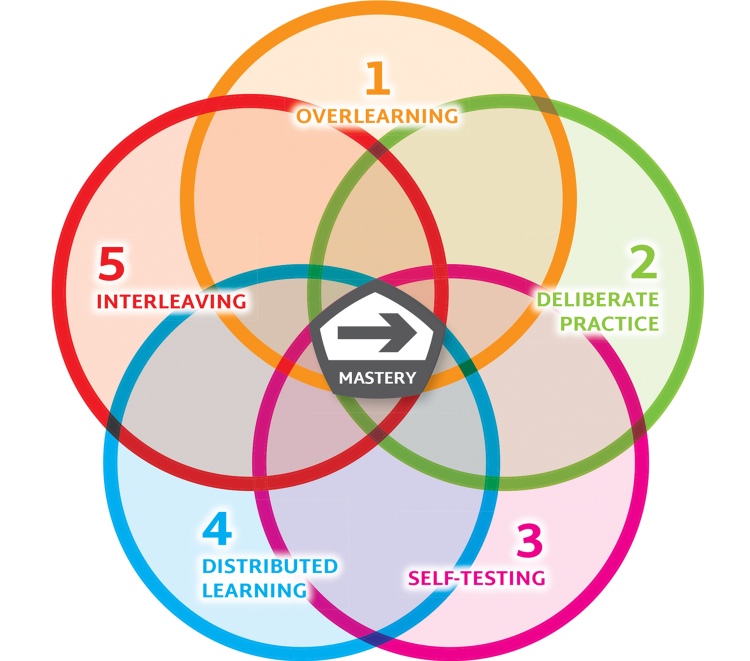Five Cognitive Science Techniques for Mastery
The ideas around mastery have been interpreted and developed in different ways so there is not a single clear definition. However it would be fair to say that mastery is when a child has a secure understanding of maths combined with genuine procedural fluency. They can then apply their understanding of maths concepts and procedures to solve different types of problems including when the skill is embedded in a different context or where a choice of method has to be made: mastery means they really know it!
To achieve this mastery of the important skills worth learning, Samson involves explicit whole class teaching, more practice and less differentiation, a balance between number sense and procedural fluency and the opportunity for children to make decisions and apply their strategies in context.
Samson ensures these things through cognitive science techniques - overlearning, deliberate practice, self-testing, distributed learning and interleaving - which underpin the whole programme.
Taking on board the very latest research for mental maths teaching - there are five essential techniques to use with Samson.

1. Overlearning
To learn any new skill properly, we basically need to overlearn it.
Children need far, far more practice than most people think. Remember they are novices. As Daniel Willingham says, ‘practice makes perfect: but only if you practice beyond the point of perfection’: Pupils learning after they know the material to prevent forgetting: ‘a good rule of thumb is to put in another 20% of the time it took to master the material’. Rather than have the children practise till they can do it – practise till they can’t not do it.
2. Deliberate Practice
To overlearn we need ‘Deliberate Practice’.
Deliberate Practice basically means:
- Focus on specific skills
- Build up long term memory
In a deliberate practice approach individual lessons look very different from the final skill you are trying to produce such as applying those skills learned in an extended task or real life context. The best way to develop these skills may not be like the final skill itself.
Children improve by working separately on the specific skills they will need in order to do the task successfully. This model is the Deliberate Practice Model in action.
With the deliberate practice method, detailed mental models (i.e. detailed knowledge of mental strategies, number bonds and tables facts) are stored in long term memory. As a result of having these detailed mental models stored, children can then solve problems with greater ease.
3. Self-Testing
Low stakes quizzing helps them remember material because using our memory improves our memory.
Therefore: Mental Flipcharts and Strip Sheets would be used 3x per week & Timed Challenge Sheets 2x per week.
- 3x per week: Mental Flipchart and Strip Sheet work
- 2x per week: Timed Challenge Sheet
- Timed Challenge Sheets are also used for deliberate practice in specific areas Pupils self-test and practise their skills daily.
4. Distributed Learning
Distributing practice (rather than cramming): ‘It is virtually impossible to become proficient at any mental task without extended, dedicated practice distributed over a period of time’.
It is virtually impossible to become proficient at any mental task without extended, dedicated practice distributed over a period of time. Samson Number Wagons set off from P1 and make their way through each stage. The programme has been developed with ‘mastery assessment’ in mind. The processes are distributed over the session and re-visited consistently. Each process is added to, not dropped as the session goes on.
5. Interleaving
Children have to know how to manipulate numbers in their head and apply learned strategies to questions in different contexts.
The children should be regularly exposed to problems in a real life circus context: questions are dressed up in a word problem format, often linking two areas. If children are learning the four processes it is very effective to interleave questions across more than one area of maths. This technique is especially effective with three and four process context questions where children have to decipher what type of question it is. It is clear we learn content better when it is revisited, consolidated and interleaved with problems.












